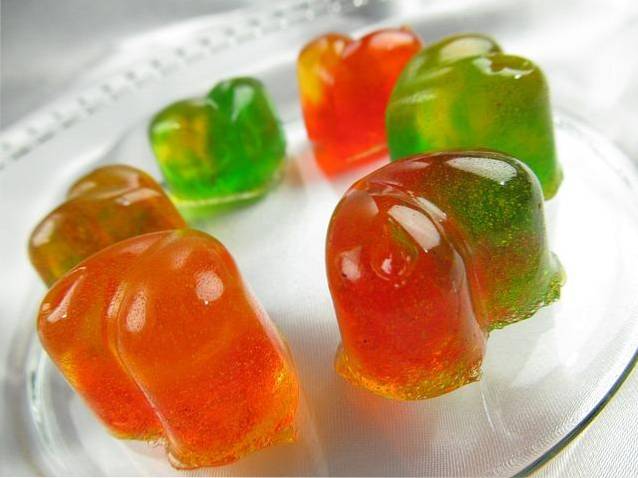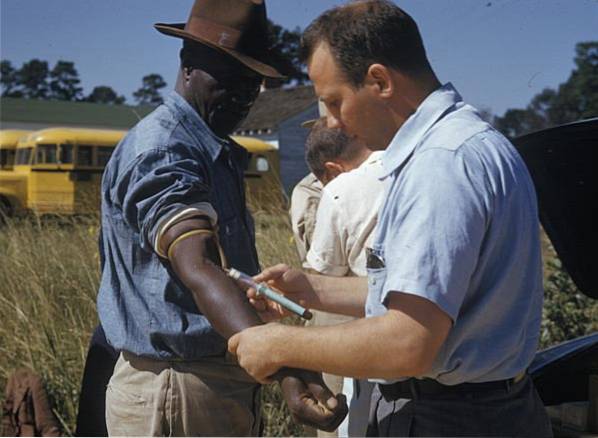
What is the Colloidal State of Matter?
The colloidal state of matter is the condition that a mixture has when one of its elements, in solid state, is dispersed in another that is in liquid or gaseous state.
For this reason, it is often stated that a mixture is in a colloidal state or suspension when there are 2 chemical phases inside it at the same time. When a system is in a colloidal state, it is called a colloid..

A colloid is made up of 2 phases, these are known as the dispersed phase and the fluid phase. The dispersed phase corresponds to a solid, dispersed in very small particles (between 1 and a thousand nanometers).
While the fluid phase, also known as a disperser, is made up of a liquid or gas, where the solid particles are scattered.
Colloidal or colloid state
Colloids often generate confusion regarding the state in which they are found, this is because visually they seem to have characteristics of 2 states of matter at the same time.
Gelatin is an example of a colloid, where solid particles (collagen) are dispersed in a liquid (water).
The word colloid comes from the Greek kolas, which means to stick, this because it is difficult to separate the 2 elements of a colloid.
Properties of the colloidal state
1- Brownian motion
The collision of the solid particles in suspension against the molecules of the liquid or the gas, generates that these present an irregular and random movement through the fluid phase.
This effect is known as Brownian motion, and it is easily observable if we expose a solid-gas type colloid to a beam of light, for example, when illuminating a column of smoke or fog..
2- Tyndall effect
If we pass a beam of light through a colloid, it will be clearly visible. This phenomenon, known as the tyndall effect, occurs because the particles of the dispersed phase bounce the light in all directions, making it visible..
By pointing a laser light at a glass with juice or jelly, the tyndall effect can be appreciated.
3- Dialysis
Dialysis consists of the separation of small elements present in a liquid by means of a membrane, with the exception of colloidal particles..
This property, which is not exclusive to colloids, makes it possible to remove impurities from a colloid to purify it.
Classification of colloids
Depending on the state of the phases, there are 5 types of colloids:
1- Aerosol
Solid or liquid dispersed in a gas. There are solid aerosols, such as smoke or mist; and liquid aerosols, such as insecticides. Today the word aerosol, applies to any spray product, for example deodorants.
2- Emulsion
One liquid dispersed in another. The most common are usually dairy products, where the milk fat is dispersed in the water. For example, butter.
3- Foam
Gas dispersed in a solid or liquid. When gas disperses into a solid it generates a “heavy” foam that generally has industrial uses, such as sealants and polystyrene foams..
Liquid foam is lighter and is used domestically, such as shaving foam or whipped cream.
4- Gel
Solid dispersed liquid. Like jellies, jellies and hair gels.
5- Sun
Solid dispersed in a solid or a liquid. They take on a liquid consistency and become thicker, like paint and ink.
References
- Paul C. Hiemenz, Raj Rajagopalan (2017) Principles of Colloid and Surface Chemistry, Third Edition, Revised and Expanded. United States: CRC Press.
- The Editors of Encyclopædia Britannica "Colloid" in: Britannica (2015) Recovered in 2017 from britannica.com.
- Study "Colloids: Definition, Types & Examples" in: Study (2014) Recovered in 2017 from study.com
- Anne Marie Helmenstine “Tyndall Effect Definition and Examples” in: ThoughtCo (2017) Recovered in 2017 from thoughtco.com.
- Steve Schuler “The Tyndall Effect” in Science20 (2015) Recovered in 2017 from science20.com.
- BBc "Kinetic particle theory and state changes" in: BBC (2016) Retrieved in 2017 from http://www.bbc.co.uk.
- Chemistry Works "Purification Of Colloids" in: Chemistry Works (2013) Recovered in 2017 from chemistryworks.net.



Yet No Comments